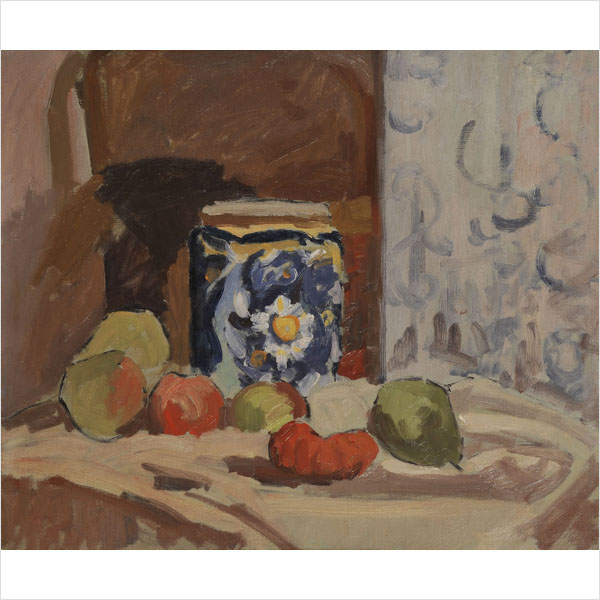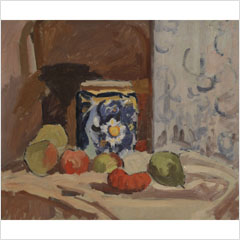
動画による作品解説
ポール・セザンヌ
ウルビノ壺のある静物
1872-73年 油彩・カンヴァス 45.0×55.0cm
Paul Cézanne
Still Life with Urbino Vase
Nature morte au vase dit d'Urbino
1872-73, Oil on canvas, 45.0 × 55.0 cm
布の上に置かれた果物とウルビノ壺が明るい色彩で描かれています。それまで暗い色調で描いていたセザンヌはこの頃ピサロと出会い、ともに制作しました。年長のピサロに「三原色とその混色だけで描きなさい」と助言されたセザンヌは、その傍らで制作する中で次第に明るい色彩による画風へと展開していきました。
この作品はピサロとともにガシェ博士の家に滞在したときに描かれた作品です。果物や壺、布は、荒い筆跡の色彩であらわされています。壁に映る壺の影さえも平面的に描写され、画面全体が平らな色面で構成されています。セザンヌは同じモティーフを、別の角度からも描いています。そこでは壺や果物の影がはっきりとつけられ、より立体的な空間が暗示されています。この二作品からセザンヌはこの頃、光と色彩の効果を模索していたことがうかがわれます。
Fruits and the Urbino vase placed on the cloth are depicted in bright colors. Until then, Cézanne had been painting in dark tones, but around this time, he met Pissarro and worked together with him. Advised by the older Pissarro to 'paint using only the three primary colors and their mixtures,' Cézanne gradually developed a style with brighter colors while working alongside him.
This work was painted when Cézanne stayed at Dr. Gachet's house with Pissarro. The fruits, vase, and cloth are expressed with rough brushstrokes of color. Even the shadow of the vase on the wall is depicted flatly, and the entire composition is made up of flat color planes. Cézanne also painted the same motif from a different angle. In that painting, the shadows of the vase and fruits are clearly defined, suggesting a more three-dimensional space. These two works indicate that Cézanne was exploring the effects of light and color during this period.

